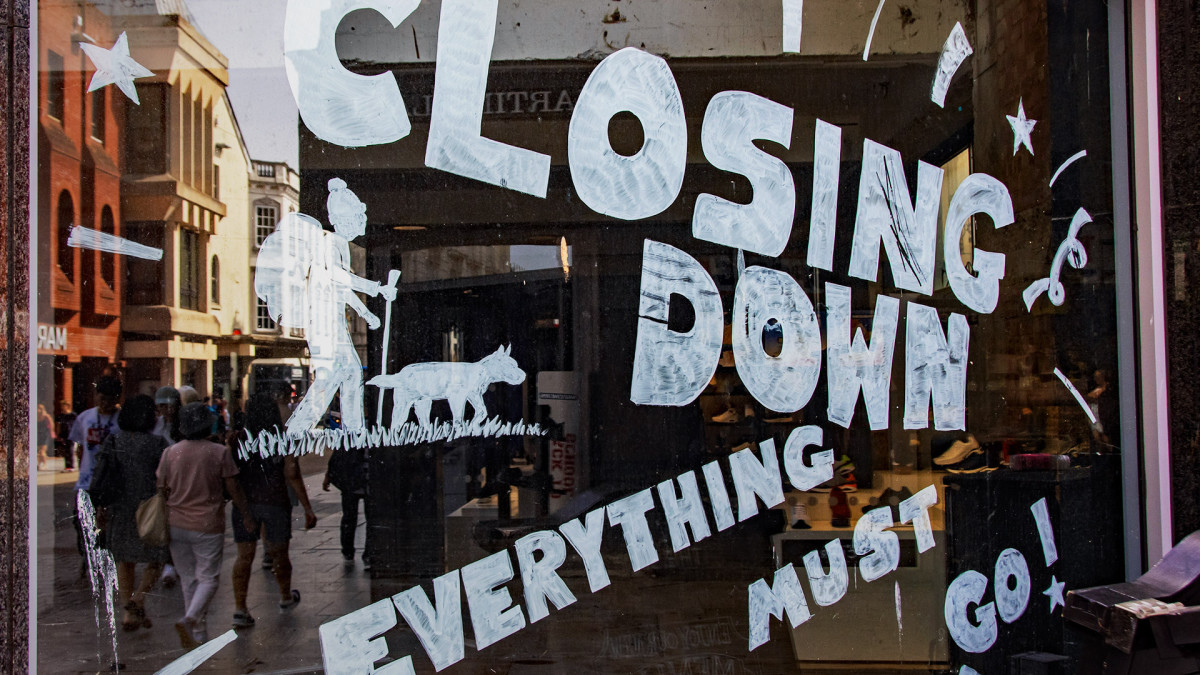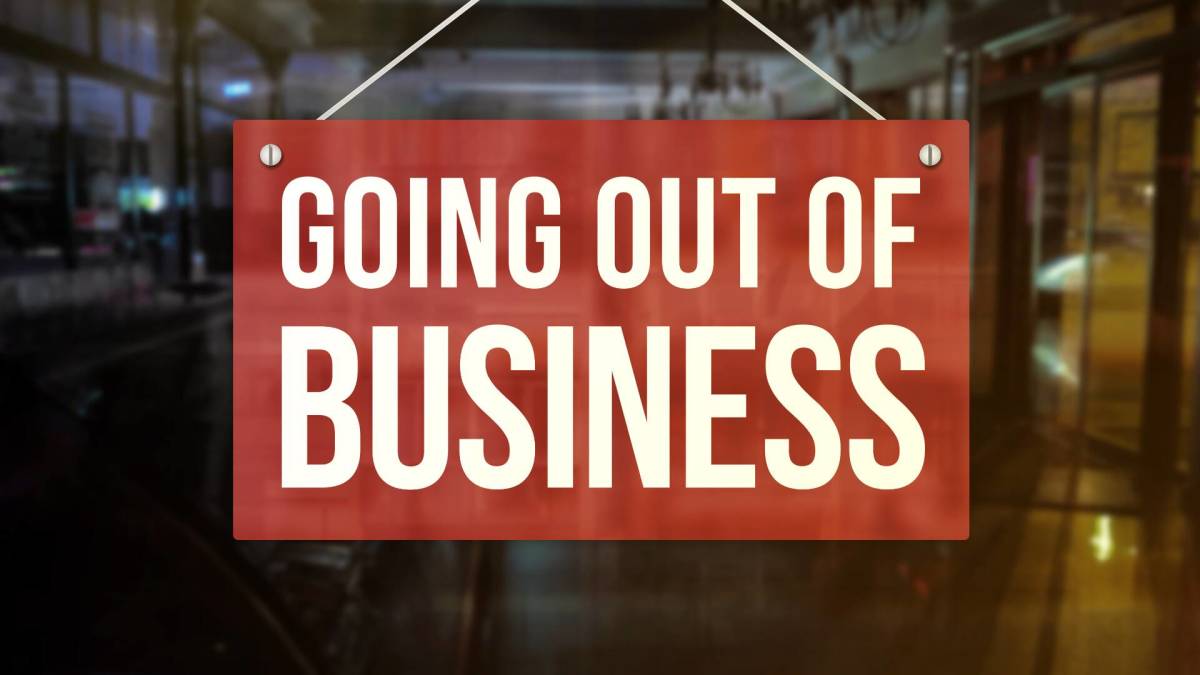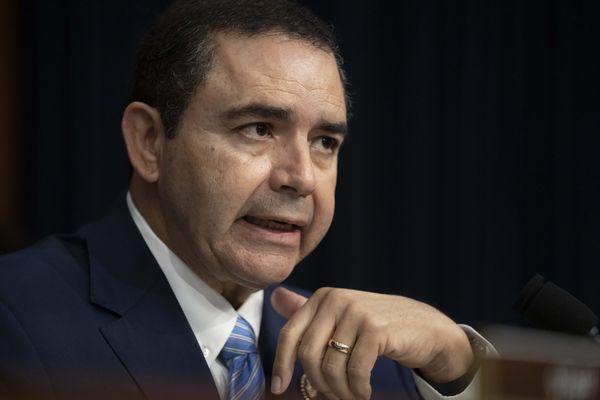
Chapter 11 bankruptcy allows retailers to reshuffle their expenses and debt, providing critical wiggle room necessary to give them a shot at long-term survival. However, it remains the least favorite option available to management teams.
Retail store chains in bankruptcy protection experience damaged relationships with suppliers, bankers, workers, and customers. When the retailer is publicly traded, shareholders take it on the chin, making it less likely they'll want to own shares if the company survives and becomes public again.
Store closures and asset sales associated with Chapter 11 restructuring can mean many get left in the lurch, particularly if the retailer offers essential products or services that are hard to find elsewhere.
Yet, despite those risks, bankruptcy is increasingly common among retailers struggling to maintain market share against fierce competition from e-commerce players like Amazon and big-box retailers like Walmart and Costco Wholesale.

Shutterstock
Competition causes brick-and-mortar stores to struggle
It may be hard to believe today, but Sears operated 700 stores when it filed for bankruptcy in 2018. Nowadays, it only operates 13 stores after emerging from Chapter 11 bankruptcy in 2022.
In 2018, Bed Bath & Beyond customers could visit 1,500 stores. It had fewer than 300 when it went bankrupt in 2023, and now all its stores are closed, although Overstock.com operates the brand's e-commerce site.
Related: Iconic '90s retail brand faces Chapter 11 or 7 bankruptcy, liquidation
Christmas Tree Shops had over 80 stores but closed all of them last year when it went bankrupt.
A fair amount of the blame for those closures lands at the feet of superstores like Walmart (WMT) and Costco Wholesale and e-commerce colossus Amazon.
Over the past decade, Walmart’s annual revenue surged from over $450 billion to $648 billion. Costco’s (COST) revenue has more than doubled, with Wall Street estimating over $250 billion in sales this fiscal year. Meanwhile, Amazon’s sales have increased from $74 billion to an expected $641 billion this year.
The growth of these retail behemoths has largely happened at the expense of smaller retailers unable to negotiate prices low enough to keep the lights on.
Major pharmacy retailer forced into bankruptcy
Rite Aid (RAD) is one the most recent retailers to suffer the consequences of fierce competition from larger players.
In 2023, it saw its sales slip as expenses increased, particularly due to interest owed on a mountain of debt it took on to keep pace with industry leaders CVS Health, Walgreens Boots, Walmart, and others.
More Retail Stocks:
- Costco unveils executive change that could trigger membership-fee boost
- Walmart makes a surprise move that investors will love
- Analyst unveils new Lowe's stock price target ahead of earnings
Walmart is the fifth largest company ranked by prescription market share, and Costco is ranked 11th. Amazon (AMZN) is also expanding more deeply into healthcare, including via mail-order prescriptions.
Rite Aid also faces new upstarts, including billionaire Mark Cuban's Cost Plus Drugs. Cuban's pharmacy provides discount prescriptions via mail order, undercutting competitors by adding just 15% to his cost, plus a modest $5 processing fee.
Ultimately, sliding sales of everyday essentials, like aspirin, vitamins, and toothpaste, stiff competition, and rising interest expenses on its over $3.3 billion in debt proved a big pill for Rite Aid to swallow. Its quarterly interest expense had swelled 35% year-over-year to $65 million before Rite Aid's bankruptcy filing on Oct. 15.
It didn't help that Rite Aid faced an additional existential threat.
In March 2023, the Department of Justice filed a civil suit against Rite Aid alleging pharmacists “repeatedly filled prescriptions for controlled substances with obvious red flags" and that it "intentionally deleted internal notes about suspicious prescribers.”
Walgreens Boots and CVS Health settled similar opioid suits for $5.7 billion and $4.9 billion.
The possibility that Rite Aid would need to finance a billion-dollar settlement made business-as-usual untenable, given its losses had exceeded $300 million in Q2 last year.
Rite Aid sells assets, closes stores
Rite Aid's bankruptcy protection allows it to renegotiate debt payments and leases. It also means hundreds of stores will close, and leases will be sold. The company has already exited the pharmacy benefit manager (PBM) market, selling Elixir to MedImpact for $576.5 million in February.
After filing for bankruptcy, Rite Aid announced 354 store closures in separate court filings in 2023. The closures have continued this year. So far, it's announced 75 more store closures in 2024, including locations in California, New York, and New Jersey.
According to its website, Rite Aid, which once operated over 2,300 locations, only has 1,704 stores left operating in 16 states.
On Feb. 27, Rite Aid reported a loss of $18 million in the month ending Jan. 27, disclosing current assets of $7.4 billion and liabilities of $10.1 billion.
It's possible more stores could be on the chopping block. Rite Aid is attempting to sell itself entirely, and after an extension earlier this month, the deadline for bids is Feb. 29. If a rival acquires the embattled chain, more stores will likely be shut in overlapping markets.
Related: Veteran fund manager picks favorite stocks for 2024







